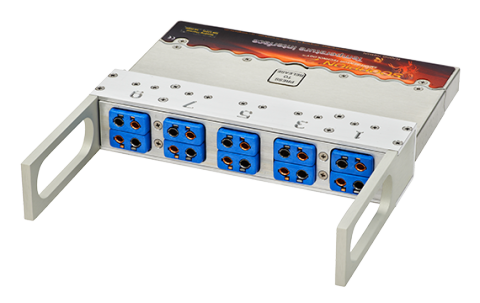Commercial bakery oven data loggers, such as those from Reading Thermal, are an invaluable tool for profiling oven temperatures that affect the consistency of your products and the efficiency of your process.
Reading Thermal, headquartered in Sinking Spring, Pennsylvania, has been studying, measuring, and understanding the commercial baking process for more than 25 years.
We manufacture and support the SCORPION® 2 Data Logger, which measures and maps the key baking parameters of temperature, air velocity, heat flux and humidity, and has become a standard in the baking industry.
Why Measure Oven Temperature?
Oven temperatures cause physical and chemical reactions in dough/batter, and those that are too low or too high during baking can lead to undesirable changes in fermentation and humidity levels as well as in surface coloring, texture and flavor.
If you produce bread, artisan bread, rolls, hamburger buns, cakes, biscuits, or other bread products, you understand that several stages of the process are temperature-dependent, such as oven-spring, drying/dehydration, and color formation.
Too much heat coming from one direction in the oven can cause the bottoms of the loaves to burn before the crusts brown properly. An oven that is too cool usually produces a heavy and unappealing loaf with a pale or soft crust.
Measuring and controlling internal food temperature is also key to achieving food safety. The Food Safety Modernization Act (FSMA) requires commercial bakeries to provide validation of process controls, or thermal kill steps, in an effort to reduce food borne pathogens, such as Salmonella spp, in ingredients and finished products.
How to Measure Oven Temperature
Reading Thermal designed the SCORPION® 2 Temperature Sensor Array to measure temperature at product level, in fixed positions across the conveyor, and deliver a true representation of what your product is experiencing over time. Different types of pluggable sensors are available, including one designed for solid or tight mesh conveyors and one for open mesh conveyors.
The sensor array is connected to the SCORPION® 2 Data Logger and then travels through the oven with the product, yielding a precise picture of temperature from side-to-side and end-to-end.
After gathering the data, the SCORPION® Software (SV8) Food Safety Module simplifies the calculation of lethality and then generates a comprehensive report displaying cumulative log reduction. By combining this ease of measurement with robust data capture, the SCORPION® 2 System makes it simple to optimize your process and products while meeting food safety standards.
Oven data loggers from Reading Thermal will provide your commercial bakery with information you can use to make reliable data-based decisions about your processes and products. Contact us online, or call our headquarters in Sinking Spring, Pennsylvania at (610) 678-5890 Ext. 2 to learn more about our innovative products.

